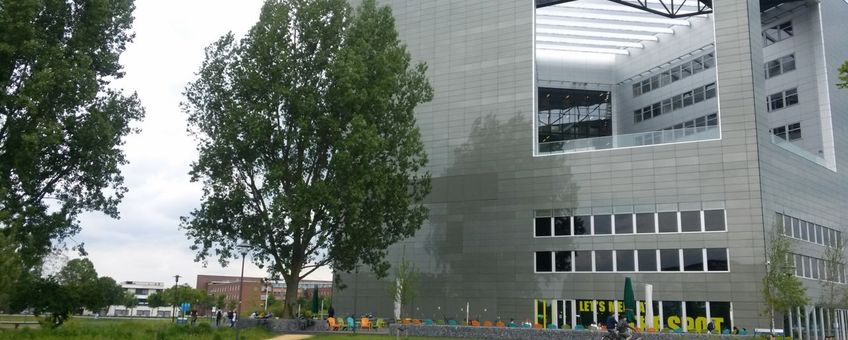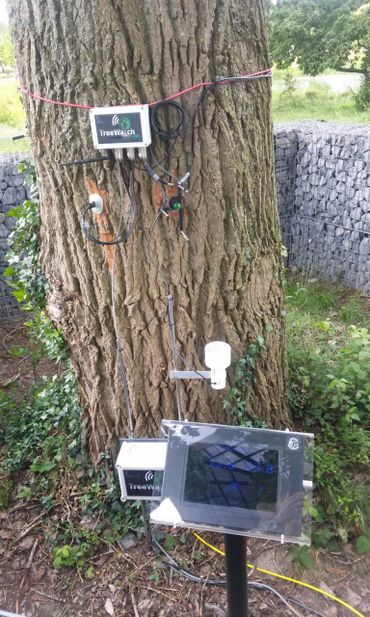
Dutch tree sends tweets about climate change
Wageningen University & ResearchTweeting from the account @TreeWatchWUR, the tree sends messages about the amount of water flowing through its vessels and about how quickly it is growing. Water shortages during periods of drought cause stress to trees, slowing down their growth.
 The tweets are a gimmick designed to raise public awareness of the interaction between trees and their surroundings. The data thus gathered will be used to supplement knowledge of the physiological processes in trees in relation to weather conditions and the implications of future climate change.
The tweets are a gimmick designed to raise public awareness of the interaction between trees and their surroundings. The data thus gathered will be used to supplement knowledge of the physiological processes in trees in relation to weather conditions and the implications of future climate change.
Growth rings and wood structure
The ever-changing weather conditions are causing variations in growth activity in poplars. This is evident from the structure of the growth rings in the trees, the way that trees store information about weather conditions in their wood archives.
The information measured using the instruments on the twittering tree provides the key to understanding changes in the wood structure in the growth rings. As trees can become hundreds of years old, we are able to go back hundreds of years to study trees’ reactions to their environment. Comparing the growth of trees in different parts of Europe should provide information about the effect of various soil and climate conditions on the vitality of trees. This knowledge is important for determining which species of trees are able to withstand the periods of drought set to become more common in our changing climate.
European network
The tree in Wageningen is the fifth twittering tree in Europe. An oak, a maple and a beech tree are tweeting in Belgium, and a Scots pine is tweeting in Germany. A larch in Switzerland and another Scots pine in Spain are waiting eagerly to get onto Twitter. The aim is to ensure that twittering trees can join existing networks conducting research into growth, nitrogen fixation and water transport in trees.
Text: Wageningen University & Research
Photos: Wichertje Bron (lead photo: the tweets sending poplar)
